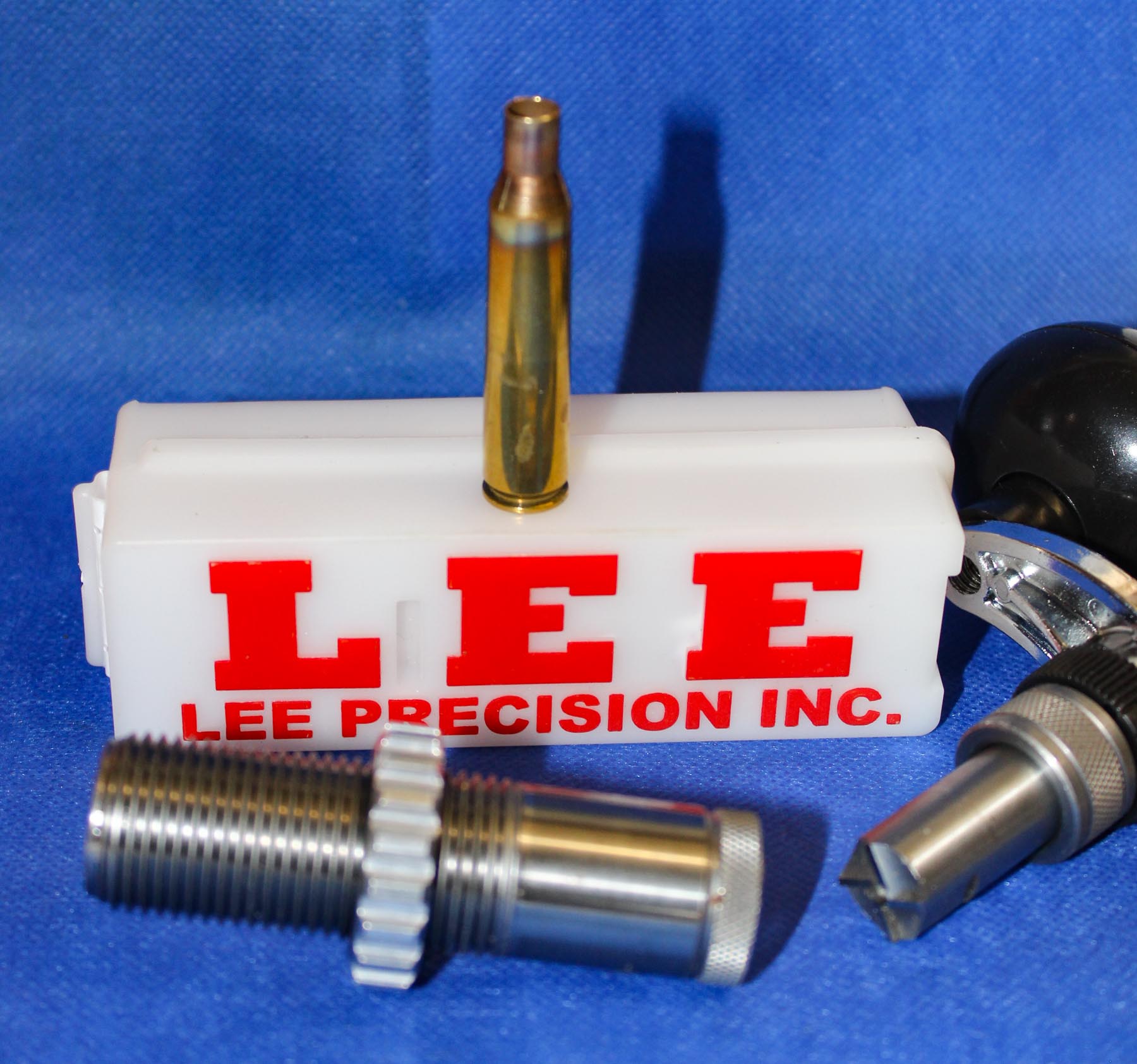Reloaders are constantly measuring and the most important measurement is case length, which must never exceed the maximum allowed.
In the normal course of events, when a cartridge case is fired, it stretches. How much depends on the quality of the brass, its age and the intensity of the load.

If this increase in length is not trimmed, it can cause problems when the case is reloaded.
The camming action of the bolt forces the extra length of the projectiles to shank, which raises the pressure. This in turn will raise the exit velocity, change the projectile point of impact, and if you are attempting to shoot a group, it will be enlarged.
So you need to keep cases trimmed to a specific length at all times. This means that every time they come across your bench, they have to be measured to ensure they are not over-length.
In extreme cases, a stretched case may refuse to chamber; however, you should be aware that some chambers are cut with a long neck, to the point where over-length cases may be acceptable.
Almost all manufacturers of reloading equipment make some form of case length trimmer. In a general sense, they are usually one of three types.
THE MINI-LATHE
The first is a type of mini-lathe, usually supplied with a number of pilots to fit in case mouths. In my opinion, the disadvantage is that the machine has to be reset each time you change the cartridge type.
Probably, it would assist if there was a master case of the correct length for each calibre you load for, which would accelerate the setting up process.
Having said that, they are accurate. Further, they will accept a wide variety of cases, provided you have a pilot for the case.
LEE TRIMMER
The second type is made by die manufacturer Lee. These screw into the press like a die.
They are foolproof and are adjustable in 0.001” increments. You have to buy a separate die body for each type of case that you reload. A wide range is available.
FORM AND TRIM DIE

The final type is the form and trim die, which is my preferred option. You merely insert a lubricated case into the die, and any portion of the neck that protrudes above the die is in excess.
To bring it back to the correct length, you merely file off the excess. As far as I am concerned, it is foolproof and works well.
The disadvantage is that they are usually only made in the more popular calibers. The second annoying point is that the supply in Australia seems to be limited so you have to order from overseas.
Cases need further attention no matter which trimmer you use.

You’ll have to chamfer the neck of the case, both inside and out. There are hand tools to do the job efficiently but a small battery-powered chamfering machine is a better option if you handle a lot of cases.
You need to be careful; you do not want to create a case with a sharp mouth; the desired shape is, I suggest, a chisel one.
Just remove the burrs from the inner edge of the mouth in particular, with a similarly light touch on the outside.

0 Comments